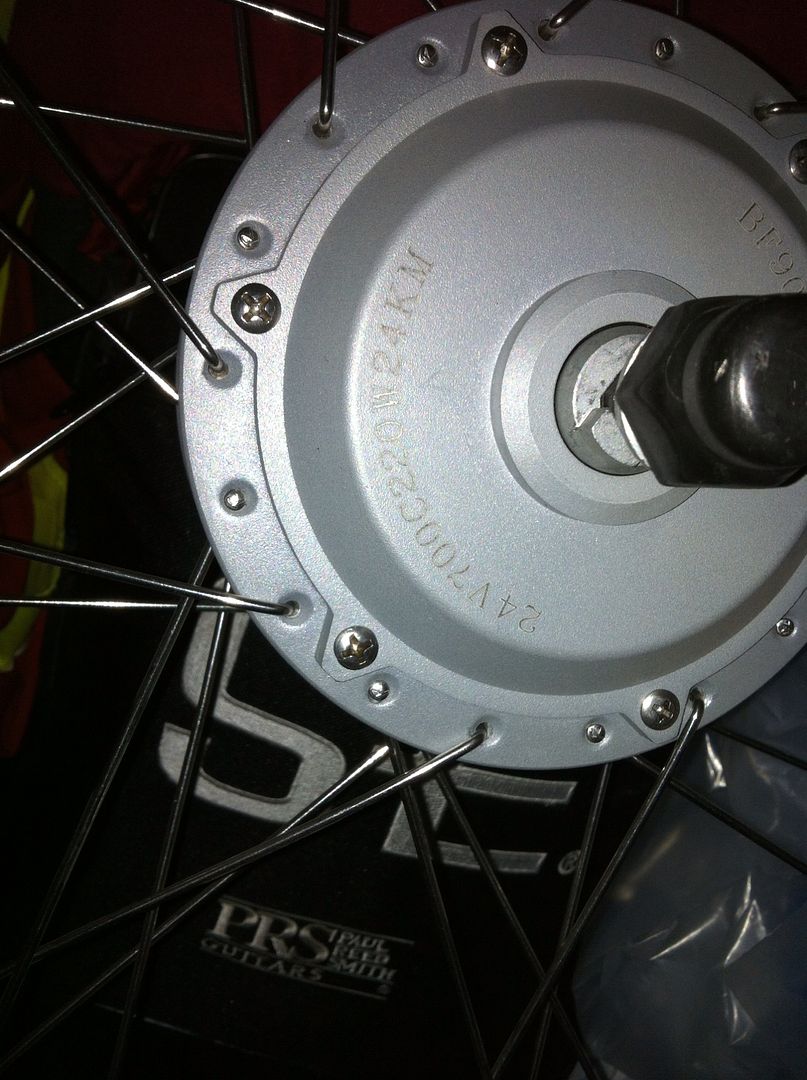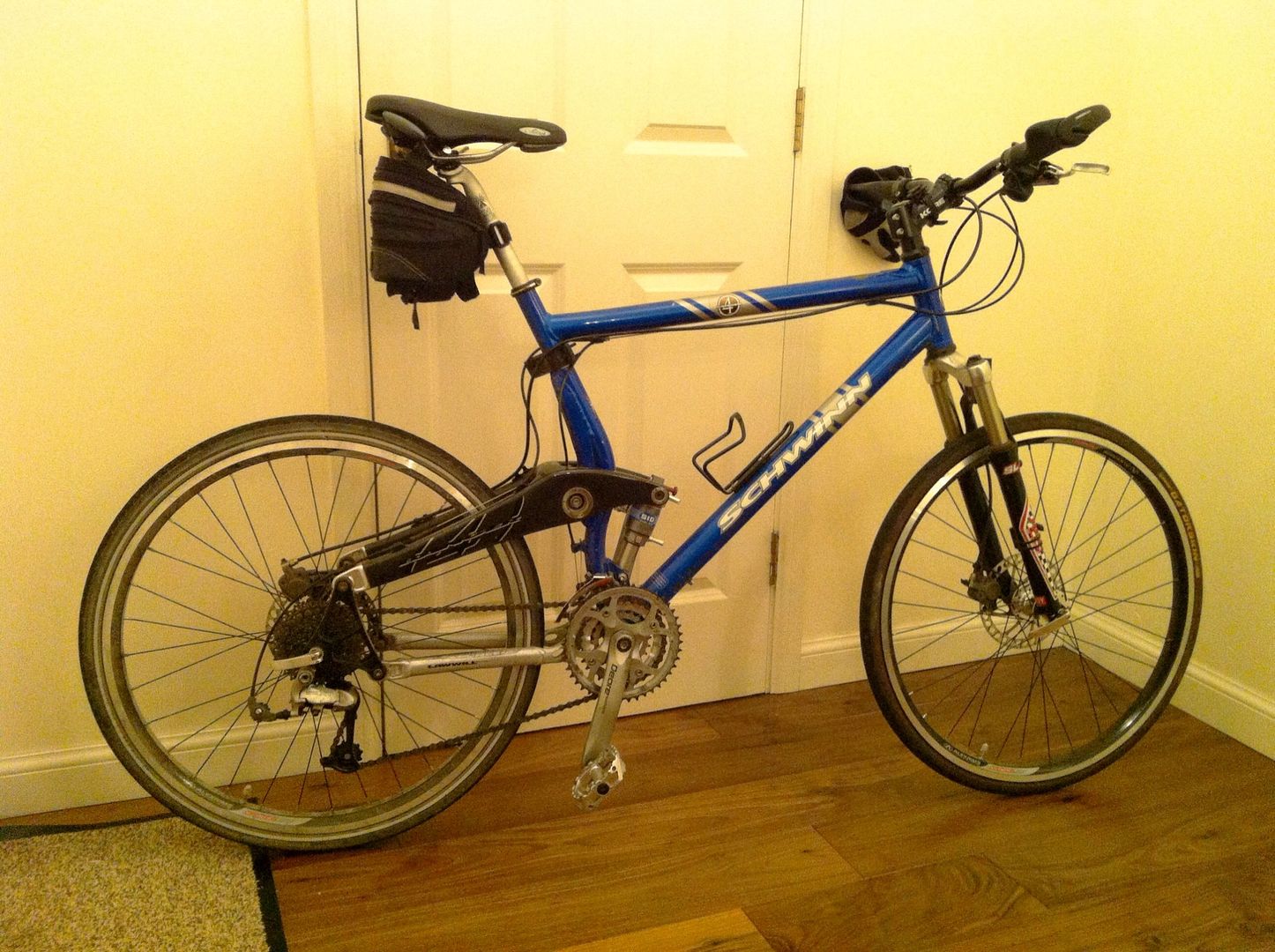Hello all, another newcomer to the Pedelec World, and keen to know and understand more.
As you may have guessed by my username, I have a greater than usual level of involvement in the world of electricity, being employed as an Electrical, Control & Instrumention Eng. for a power station for a number of years. That being said, I can't say I'd ever thought about applying the technology to my bicycle until I saw a Pedelec driver hammer past me up a long hill the other day. I didn't see the riders face, but I'm willing to bet it was wearing a very smug grin...
Anyway, my current project is to make a 15 mile each way commute as easy as possible for a reasonable cash outlay. I can do most things, basic machining, wiring, wheel building etc. for myself, but I was wondering if my current choice of bike (see below) is an ideal candidate for electrification. It's a very comfortable machine, it's unusual rear suspension in particular making it particularly pliant, a characteristic I'd quite like to keep.
I have a motor already that I bought on a whim. It may or may not be any good for the job, but this seems like the ideal place to find a loving home for it if it turns out to be unsuited to my needs. It's a brand new Bafung unit that is currently laced into a 700c rim. I'd lace it a 26" rim (something light from DT Swiss perhaps) for use on this bike, but I wondered if you guys had an opinion on what battery, controller, and voltage this 24v unit would be best suited to? Can these units be driven at 36 or even 48 volt?
The only other questions relate to some of the nomenclature used on the site, like the use of 's' when referring to batteries (12's, or 16's for instance?), is there a handy guide for this anywhere? Also, I note that the use of Hall sensor equipped motors seems to come with a potential reliability disadvantage, but what are the advantages to having them in place?
Many thanks in advance
CEGB


As you may have guessed by my username, I have a greater than usual level of involvement in the world of electricity, being employed as an Electrical, Control & Instrumention Eng. for a power station for a number of years. That being said, I can't say I'd ever thought about applying the technology to my bicycle until I saw a Pedelec driver hammer past me up a long hill the other day. I didn't see the riders face, but I'm willing to bet it was wearing a very smug grin...
Anyway, my current project is to make a 15 mile each way commute as easy as possible for a reasonable cash outlay. I can do most things, basic machining, wiring, wheel building etc. for myself, but I was wondering if my current choice of bike (see below) is an ideal candidate for electrification. It's a very comfortable machine, it's unusual rear suspension in particular making it particularly pliant, a characteristic I'd quite like to keep.
I have a motor already that I bought on a whim. It may or may not be any good for the job, but this seems like the ideal place to find a loving home for it if it turns out to be unsuited to my needs. It's a brand new Bafung unit that is currently laced into a 700c rim. I'd lace it a 26" rim (something light from DT Swiss perhaps) for use on this bike, but I wondered if you guys had an opinion on what battery, controller, and voltage this 24v unit would be best suited to? Can these units be driven at 36 or even 48 volt?
The only other questions relate to some of the nomenclature used on the site, like the use of 's' when referring to batteries (12's, or 16's for instance?), is there a handy guide for this anywhere? Also, I note that the use of Hall sensor equipped motors seems to come with a potential reliability disadvantage, but what are the advantages to having them in place?
Many thanks in advance
CEGB








